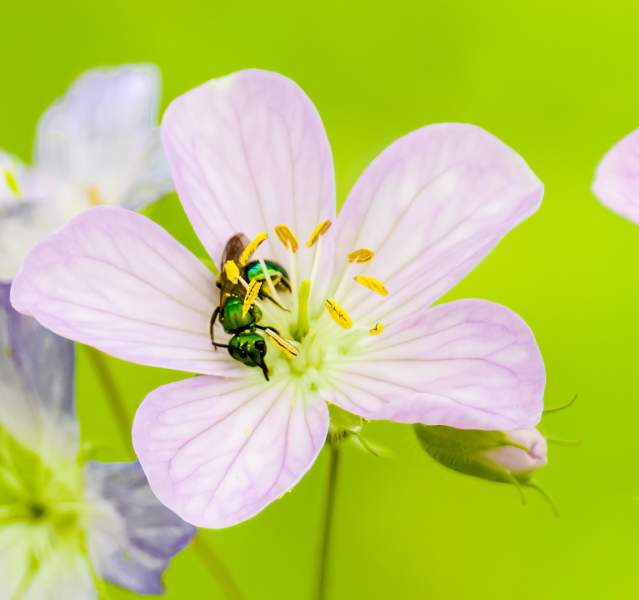Discover Heron Rookery Trail
This 3.3-mile trail winds along the Little Calumet River and takes its name from the multitude of great blue herons nests once found here. While these majestic birds no longer call the woods home, numerous other migratory and nesting birds still find shelter in the beech, maple, and wide array of other trees found here. The forest floor is also the site of a dazzling display of wildflowers, including the stunning spring ephemerals that bloom during the short window of time between the spring thaw and the return of the thick leaf canopy overhead.

The larger parking lot on the east side of the Heron Rookery connects to a trail that heads west alongside the Little Calumet River. The trail is 3.3 miles round trip.
The small parking on the west side of the rookery is the quickest and easiest way to get to the plethora of spring ephemerals that bloom here annually. The trail is 3.3 miles round trip.
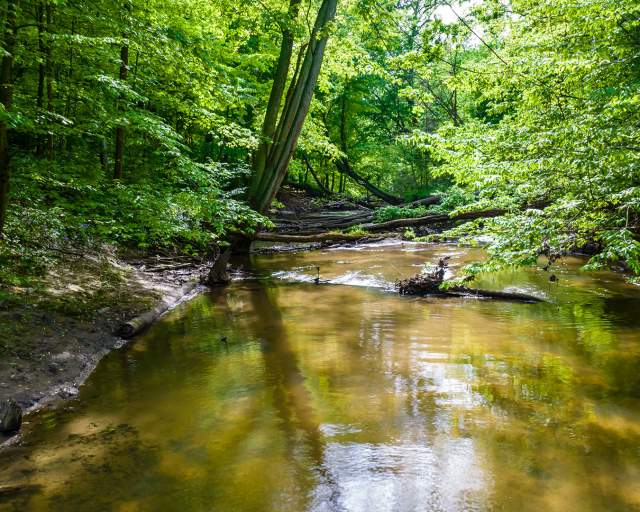
The Geological Story of Heron Rookery Trail
Like Lake Michigan, the Little Calumet River dates back to the last ice age, when great glaciers pushed south before retreating, leaving behind the sand dunes, lakes, and wetlands that make the Indiana Dunes a unique treasure. The Little Calumet lies to the south of its sibling, the Grand Calumet River, both finding their way to Lake Michigan through the shifting basins and ridges the glaciers carved into the landscape.
Geology You May See
Marvelous Plants of Heron Rookery
The forest of the Heron Rookery Trail includes a surprising diversity of trees, including gleaming white sycamores and the distinctive shagbark hickory, which looks like it’s continually shedding its skin. But the wildflowers here are the real stars. The river’s periodic flooding makes the soil here rich with nutrients and the perfect habitat for flowers. During the early spring months, unique plants like the dutchman's breeches, jack-in-the-pulpits, and trillium put on a dazzling show. This is followed by beauties like the nodding wakerobins and mayapples.
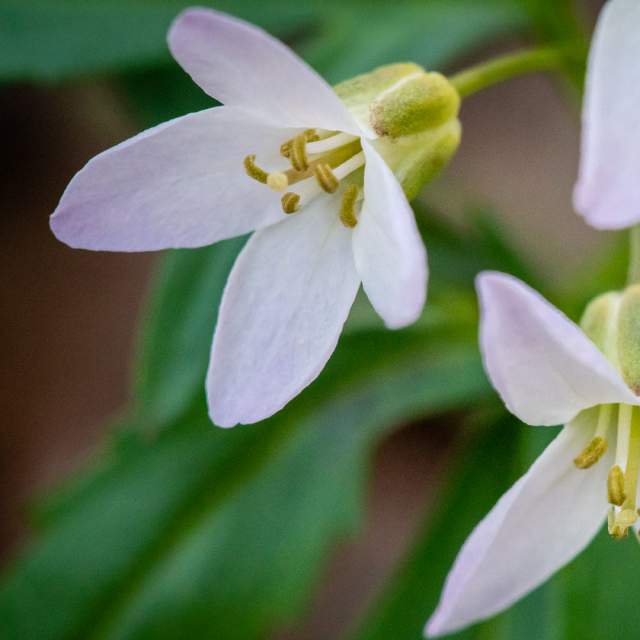
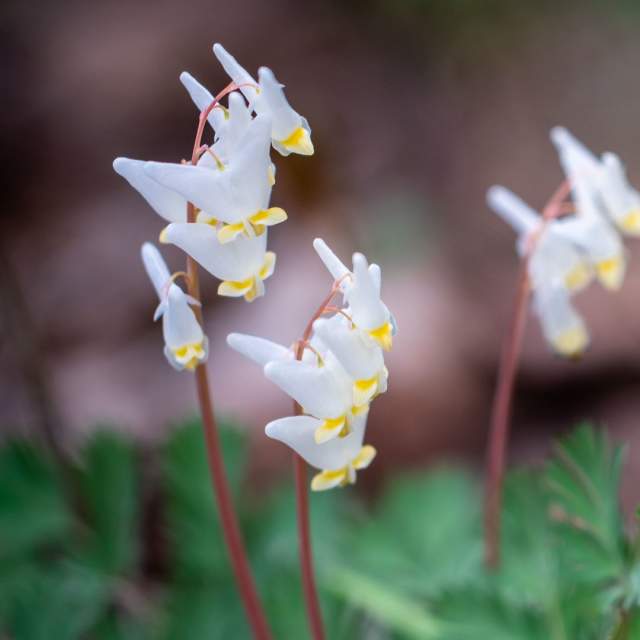
Floristic Integrity
The floristic quality, integrity, and biodiversity along the Heron Rookery Trail is remarkable. This small area of only 400 acres has over 200 native plants.
Within the Indiana Dunes National Park, there are over 350 non-native plant species, but here at the Heron Rookery there are only 11 documented non-native plant species. This is unheard of in this area.
Garlic Mustard is one of the few non-native plants in the Heron Rookery. Each spring, rangers tiptoe through the wildflowers to extract the plant before it uses up all of the area's resources.
In April, wild leeks fill the forest floor. Some say the Indigenous word Chickagou inspired the name of Chicago. It's its actual definition may relate to the smell of wild garlic and onions.
Botanist, Nathanael Pilla talks about a very interesting woodland wildflower, Jack-in-the-Pulpit. This perennial forest herb is related to the skunk cabbage and is able to change its sex.
Plants You May See
The Indiana Dunes is one of the most biodiverse national parks in the entire country. Over 1,100 flowering plant species and ferns make their homes here. How many flowers can YOU find?
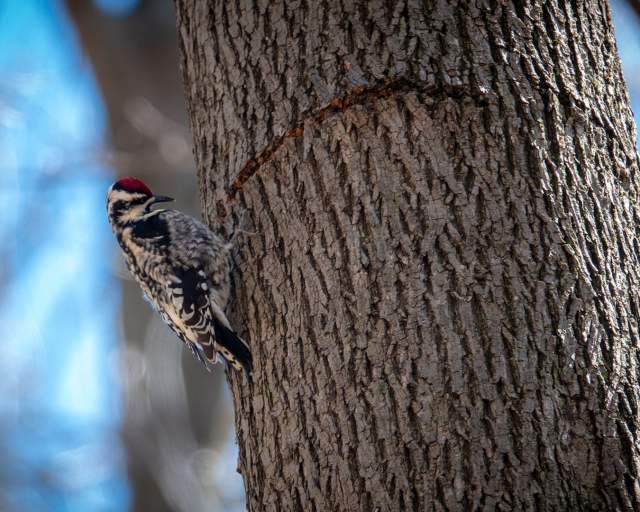
Beautiful Birds of Heron Rookery
The great blue herons may have moved on, but a multitude of beautiful birds can be found resting on the branches above the Heron Rookery Trail. The hammering of woodpeckers often echoes here, and flashes of color from kingfishers and warblers can be seen here. Perhaps thanks to its abundant insect population, the area is also known for its large number of American Redstarts.
Birds You May See
Grab a copy of this self-led birding tour, and visit six of the Indiana Dunes area birding recommended by local birders. Spectacular birds are waiting for you. Can you spot 'em all?
Amazing Insects at Heron Rookery
With so many plants, pollinating insects thrive in the woods here. Native bee species like the mason bee make a home in the trees and branches here, and tiny carpenter bees even live in the stems of plants. Beautiful dragonflies and damselflies also flash between the flowers of the Heron Rookery Trail, and caddis flies, which feed on leaf debris or other insects. The rich variety of insects forms what is called a pollinator community under the shade of the trees. Because of the wet conditions here, mosquitoes also thrive here in the summer, so be sure to come prepared.
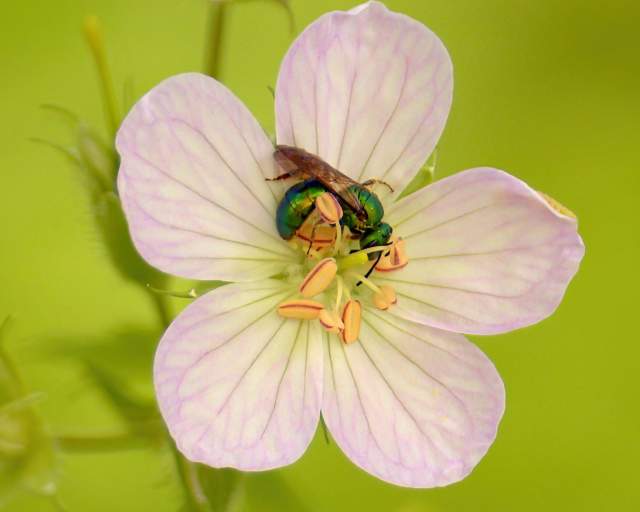
Insects You May See
Wild Bees vs. Honey Bees
Aside from making honey, honey bees live as colonies in a hive and work together as a group. Most wild bees are solitary and live in wood or tiny tunnels in the soil.
Honey bees are actually not native to North America. Although wonderful for honey production, they are unwelcome in wild areas, such as Heron Rookery. This is because they compete with the native wild bee species.
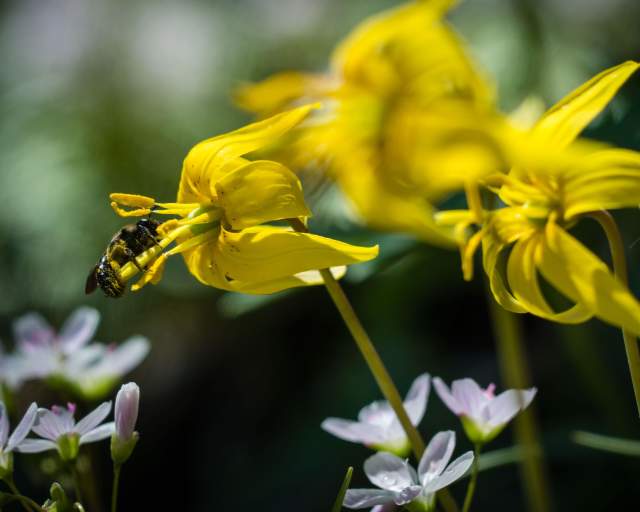
When most people think of bees, they might imagine only honeybees or bumblebees. But approximately 200 species of bees live in the Indiana Dunes! With so many flowers, it's no wonder!
Some wildflowers known as spring ephemerals bloom here for as little as three days. Tiny treasures like the harbinger of spring are visible from the trail, so look carefully!
The Indiana Dunes is one of the most biodiverse areas in the country. Show off your love for the dunes with some swag.

Pollinators?
Like many insects, ants enjoy the seductive nectar that plants use to attract pollinators. Unlike bees, however, which are specifically adapted to capture and carry pollen from flower to flower, ants are more likely to steal the nectar without effectively cross-pollinating flowers.
Master of Camouflage
While resting with its wings closed, the Comma butterfly is nearly indistinguishable from a leaf. It is not only the color that helps the insect hide, but the ragged shape of its wings.
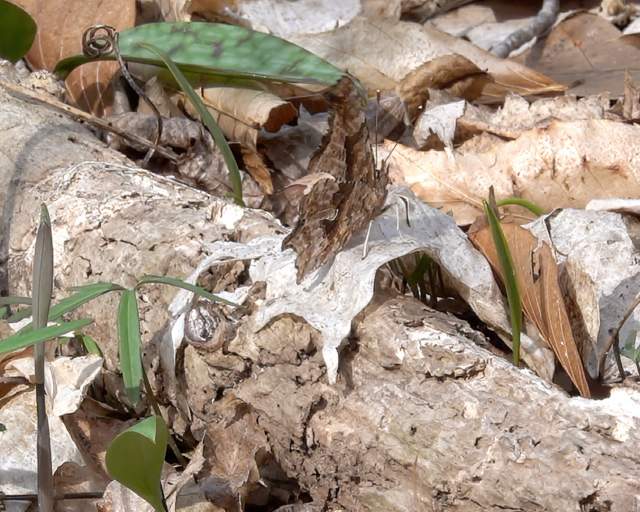
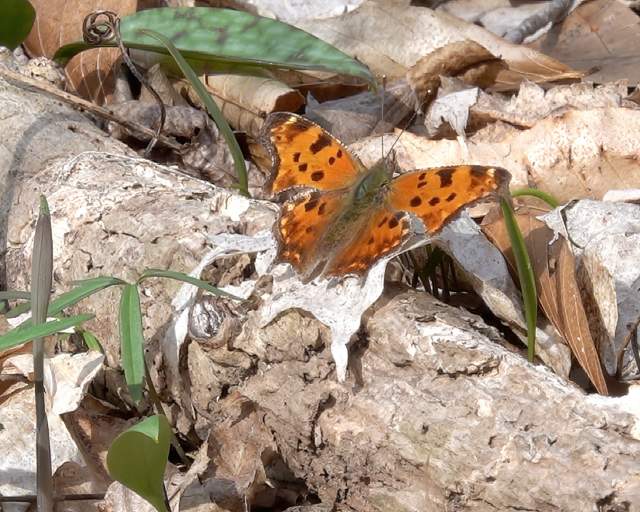
Little Calumet River
The Little Calumet River would naturally meander through this area, but it has been channelized and then ditched, so it's much lower in elevation than what it would have been historically.
The river is fighting and pushing against the bank and ultimately causes enough erosion to topple trees and create log jams. Anglers can take advantage of these spots because fish love to hide in the log jams. Paddlers, however, will have to portage their kayaks around such barriers.
Environmental DNA, or eDNA, is the DNA that can be extracted from the environment, such as the Little Calumet River water. With a sample of water, the DNA of the local fish can be detected…
What to Expect
Be Ready
Poison ivy can grow alongside the trail, and portions can become wet and muddy. Be sure to wear appropriate clothing and footwear. Bring along a reusable water bottle and snacks.
Be Safe
Mosquitoes and ticks can be a nuisance in the summer, so be sure to use Environmental Protection Agency (EPA)-registered insect repellents. Check yourself for ticks after your hike.
Be Responsible
Visitors must stay on designated trails at all times. We have created a video to help you learn about your role in enjoying the dunes area safely while minimizing your impact on the park.
How to Help
We are all responsible for protecting our parks for future generations. The Indiana Dunes, as a whole, is one of he most biodiverse areas in the United States. Here are some tips to help you limit your impact on the natural habitats in the dunes area.
Get Involved
Be the Change — Volunteer! Get more involved with the Indiana Dunes! There are many no-hassle, drop-in volunteer opportunities available for everyone. Just show up!
Love & Protect the Dunes
Each of us who visit the Indiana Dunes can also help protect natural heritage, biodiversity, and local culture by taking a few simple steps.
